-
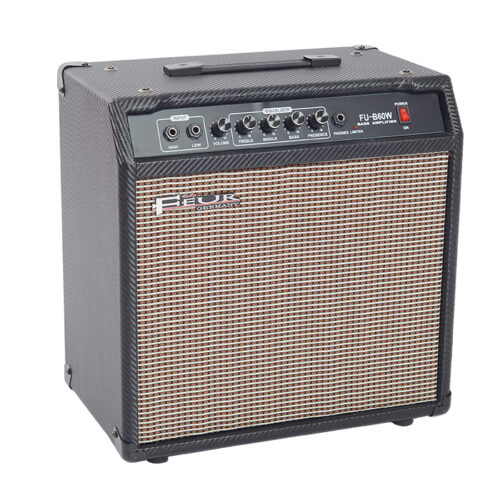 Series: Bass Series Voltage: 120V Wattage: 90 Watts E ects Loop: E ects Loop (Preamp Out, Power Amp In) Inputs: ¼" inputs (INPUT 2: -6dB) Auxiliary Input: Input for CD/MP3 Player. Headphone Jack: 1/4" Headphone jack Power Handling: 90 Watts
Series: Bass Series Voltage: 120V Wattage: 90 Watts E ects Loop: E ects Loop (Preamp Out, Power Amp In) Inputs: ¼" inputs (INPUT 2: -6dB) Auxiliary Input: Input for CD/MP3 Player. Headphone Jack: 1/4" Headphone jack Power Handling: 90 Watts -
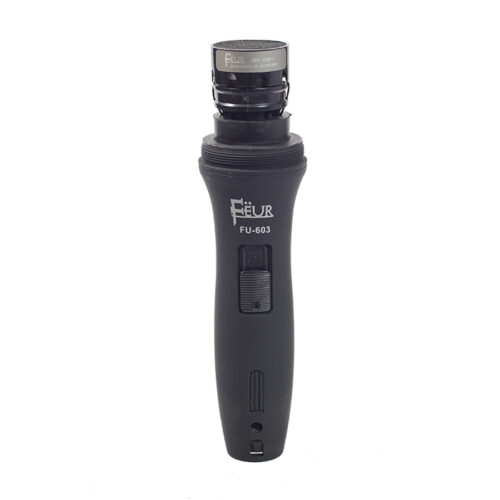
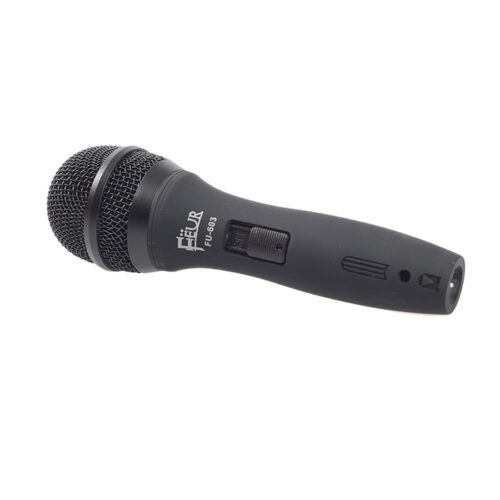
Type: Dynamic Frequency Response: 70 to 15,000 Hz Polar Pattern: Cardioid (unidirectional) Sensitivity (at 1000Hz): –52 dBV/Pa, (2.5 mV), 1 Pascal = 94 dB SPL Application: Vocal Microphone Case: Black, enamel-painted, die cast metal; matte-finished, black colored, spherical steel mesh grille Output Impedence (at 1000 Hz): 600 ohms Polarity: Positive pressure on diaphragm produces positive voltage on pin 2 relative to pin 3 of microphone output connector Connector: Three-pin professional audio connector (male XLR type). Net Weight: 2.3 Dimensions (L x W x H): 9 1/2 x 7 1/2 x 2 1/2 -
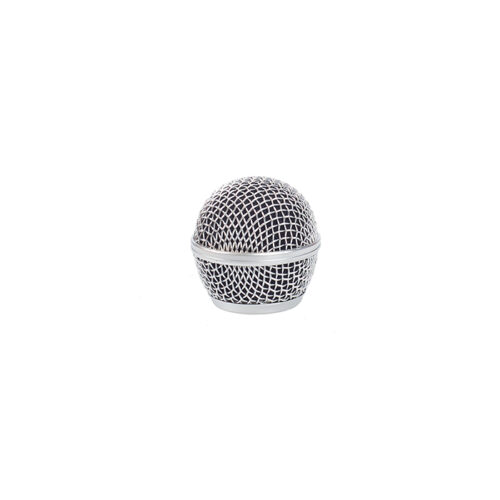
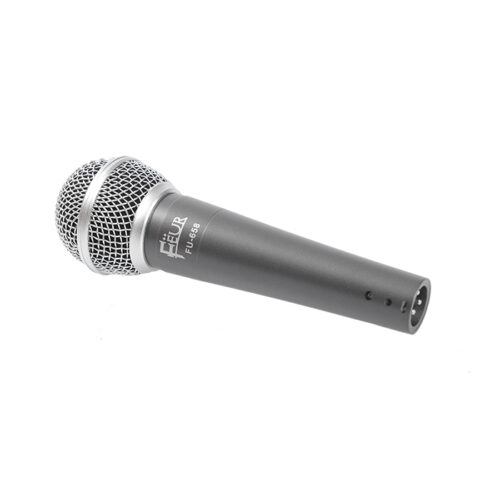 Vocal microphone Mixer controlled Type: Dynamic Frequency Response: 50 to 15,000 Hz Polar Pattern: Cardioid Sensitivity (at 1,000 Hz Open Circuit Voltages): –54.5 dBV/Pa (1.85 mV) 1 Pa = 94 dB SPL Impedance: Rated impedance is 300Hz (600ohm actual) for connection to microphone inputs rated low impedance Polarity: Positive pressure on diaphragm produces positive voltage on pin 2.
Vocal microphone Mixer controlled Type: Dynamic Frequency Response: 50 to 15,000 Hz Polar Pattern: Cardioid Sensitivity (at 1,000 Hz Open Circuit Voltages): –54.5 dBV/Pa (1.85 mV) 1 Pa = 94 dB SPL Impedance: Rated impedance is 300Hz (600ohm actual) for connection to microphone inputs rated low impedance Polarity: Positive pressure on diaphragm produces positive voltage on pin 2. -
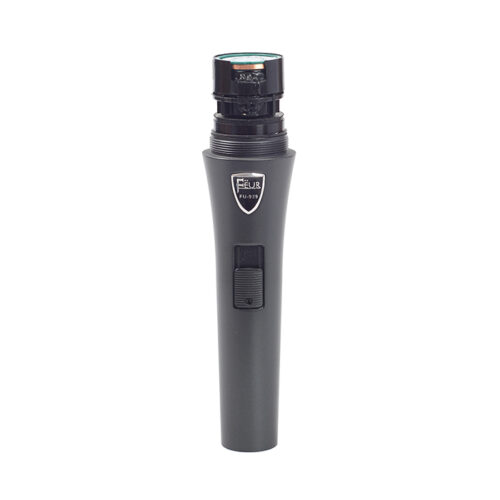
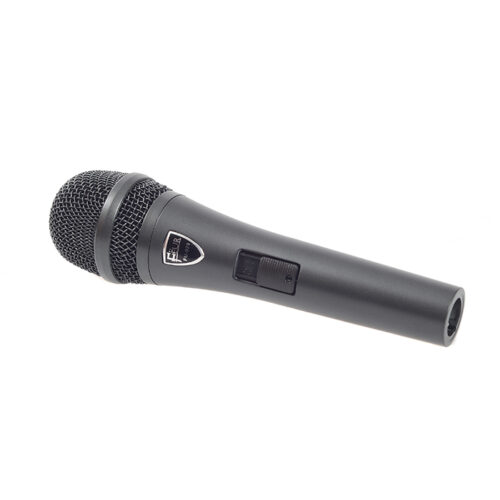 Instrument Microphone Microphone Type: Dynamic Polar Pattern: Cardioid (unidirectional) Frequency Response: 30 to 13,000 Hz Polarity: Positive pressure on diaphragm produces positive voltage on pin 2 relative to pin 3 of microphone output connector Output Impedance (at 1000 Hz): 350 ohms Sensitivity (at 1000 Hz): -55 dBV/Pa, (1.8 mV), 1 Pascal=94 dB SPL Electromagnetic Hum Sensitivity: 25 dB equivalent SPL in a 1 millioersted eld (60 Hz)
Instrument Microphone Microphone Type: Dynamic Polar Pattern: Cardioid (unidirectional) Frequency Response: 30 to 13,000 Hz Polarity: Positive pressure on diaphragm produces positive voltage on pin 2 relative to pin 3 of microphone output connector Output Impedance (at 1000 Hz): 350 ohms Sensitivity (at 1000 Hz): -55 dBV/Pa, (1.8 mV), 1 Pascal=94 dB SPL Electromagnetic Hum Sensitivity: 25 dB equivalent SPL in a 1 millioersted eld (60 Hz) -
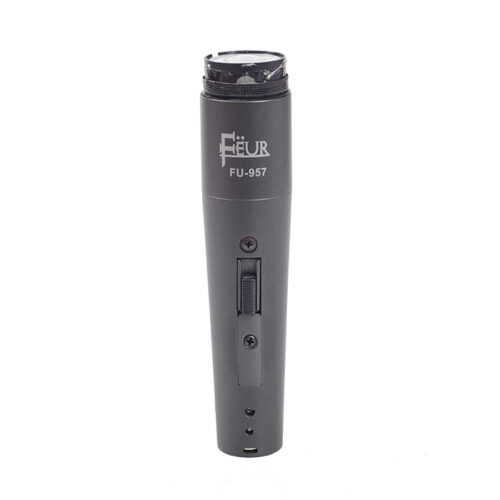
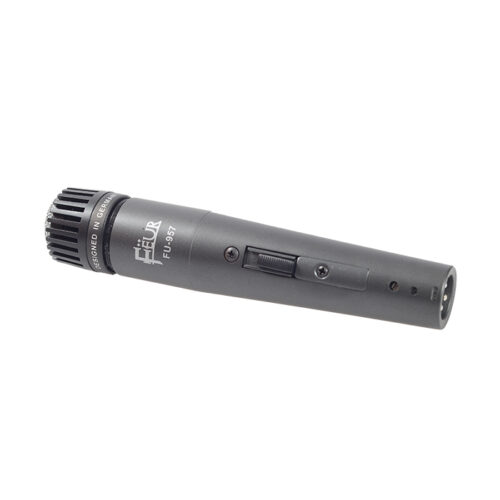 Instrument Microphone Microphone Type: Dynamic Polar Pattern: Cardioid (unidirectional) Frequency Response: 30 to 13,000 Hz Polarity: Positive pressure on diaphragm produces positive voltage on pin 2 relative to pin 3 of microphone output connector Output Impedance (at 1000 Hz): 350 ohms Sensitivity (at 1000 Hz): -55 dBV/Pa, (1.8 mV), 1 Pascal=94 dB SPL Electromagnetic Hum Sensitivity: 25 dB equivalent SPL in a 1 millioersted eld (60 Hz)
Instrument Microphone Microphone Type: Dynamic Polar Pattern: Cardioid (unidirectional) Frequency Response: 30 to 13,000 Hz Polarity: Positive pressure on diaphragm produces positive voltage on pin 2 relative to pin 3 of microphone output connector Output Impedance (at 1000 Hz): 350 ohms Sensitivity (at 1000 Hz): -55 dBV/Pa, (1.8 mV), 1 Pascal=94 dB SPL Electromagnetic Hum Sensitivity: 25 dB equivalent SPL in a 1 millioersted eld (60 Hz) -
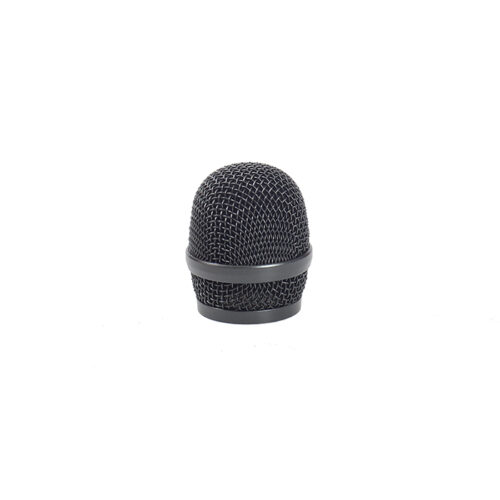
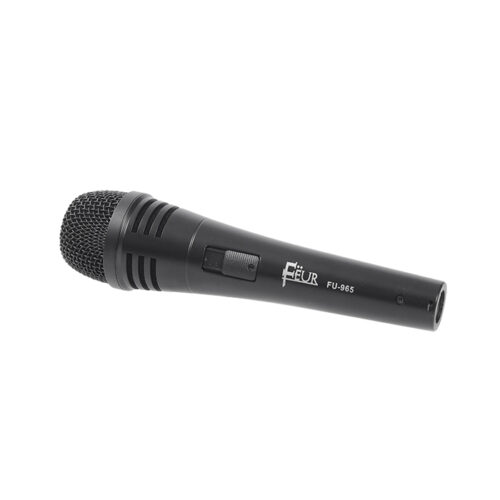 Vocal Microphone Type: Dynamic (moving double voice coil) Polar Pattern: Cardioids (Unidirectional) Frequency Response: 60 to 15,000 Hz Polarity: Positive pressure on diaphragm produces positive voltage on pin 2 relative to pin 3 of microphone output connector . Output impedance at (1000 Hz) : 300Ohms Sensitivity (at 1000 Hz) :-53 dBV/Pa, (2.2 mV), 1 Pascal = 94 dB SPL. Cartridge: 38A (Resistance: 300ohms) Connector: Three-pin professional audio connector (male XLR type). Cable: 6.0*3M, XLR to XLR
Vocal Microphone Type: Dynamic (moving double voice coil) Polar Pattern: Cardioids (Unidirectional) Frequency Response: 60 to 15,000 Hz Polarity: Positive pressure on diaphragm produces positive voltage on pin 2 relative to pin 3 of microphone output connector . Output impedance at (1000 Hz) : 300Ohms Sensitivity (at 1000 Hz) :-53 dBV/Pa, (2.2 mV), 1 Pascal = 94 dB SPL. Cartridge: 38A (Resistance: 300ohms) Connector: Three-pin professional audio connector (male XLR type). Cable: 6.0*3M, XLR to XLR -
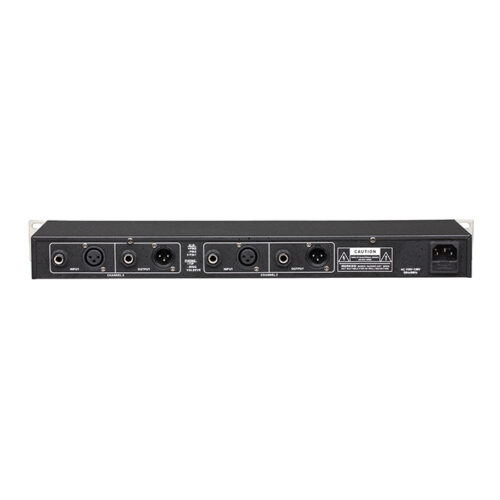
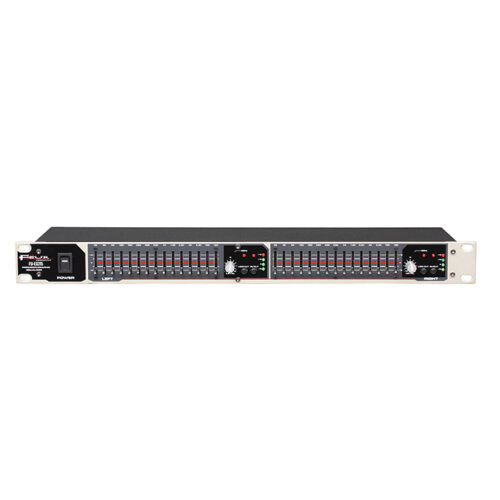 15 two-channel design, 1/3 tax-frequency constact-Q ± 12dB program scope, input gain range with ± 12dB adjustable. With -18dB low cut switch (75Hz), have e ectively eliminate low-frequency noise. With BY-Pass switch the machine to facillitate debugging. Standard 1U structure is more suitable for project installation. Five paragraphs color signal level instructions, XLR balanced and 1/4TRS unbalanced input and output also allows you to use arbitrary, 12-series visualization design to make your operation
15 two-channel design, 1/3 tax-frequency constact-Q ± 12dB program scope, input gain range with ± 12dB adjustable. With -18dB low cut switch (75Hz), have e ectively eliminate low-frequency noise. With BY-Pass switch the machine to facillitate debugging. Standard 1U structure is more suitable for project installation. Five paragraphs color signal level instructions, XLR balanced and 1/4TRS unbalanced input and output also allows you to use arbitrary, 12-series visualization design to make your operation -
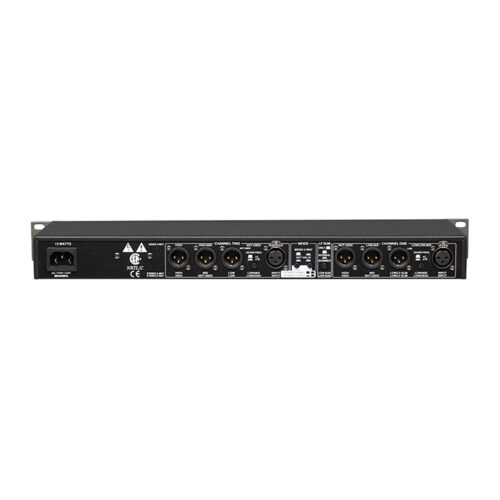
 Stereo half-frequency, single -channel third-frequncy electronic crossover.TRS or XLR balanced input and diferential. Choice of stereo or the sum of left and right channels while the synthesis of ultra-low sound. Two channels are selected x10 range swtich. Two channels 40Hz high pass lter (frequency cut end). All outputs with phase reverse switch. Therefore, the output can be independently adjusted average dB /oct Linkwitz- Riley lters (the professional standard). Stereo/ Mono status indication LED lights, indicate the selected mode of operation.
Stereo half-frequency, single -channel third-frequncy electronic crossover.TRS or XLR balanced input and diferential. Choice of stereo or the sum of left and right channels while the synthesis of ultra-low sound. Two channels are selected x10 range swtich. Two channels 40Hz high pass lter (frequency cut end). All outputs with phase reverse switch. Therefore, the output can be independently adjusted average dB /oct Linkwitz- Riley lters (the professional standard). Stereo/ Mono status indication LED lights, indicate the selected mode of operation. -
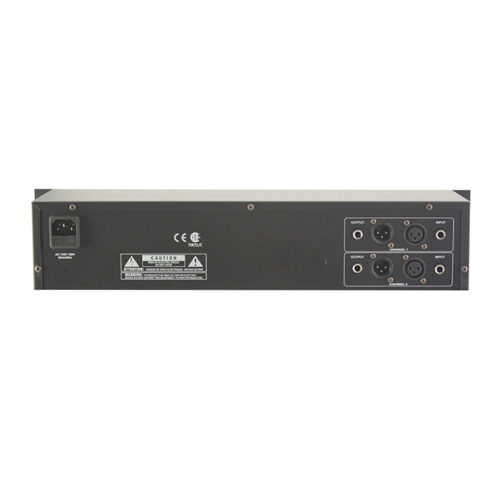
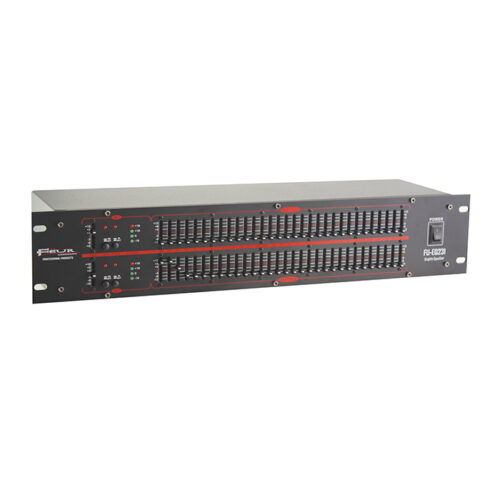 RS or di erential balanced XLR inputs and outputs. Choice of stereo or the sum of left and right channels while the synthesis of ultralow sound. X10 range are two-channel selector switch. Two channels have 40hz high pass lter (low cut) all the outputs with phase reverse switch. All the bands on the average output can be independently adjuested dB/ Linkwitz-Riley lters (the professional standard). Stereo / Mono status indication LED lights, indicating that the choice of unit of work pattern.
RS or di erential balanced XLR inputs and outputs. Choice of stereo or the sum of left and right channels while the synthesis of ultralow sound. X10 range are two-channel selector switch. Two channels have 40hz high pass lter (low cut) all the outputs with phase reverse switch. All the bands on the average output can be independently adjuested dB/ Linkwitz-Riley lters (the professional standard). Stereo / Mono status indication LED lights, indicating that the choice of unit of work pattern. -
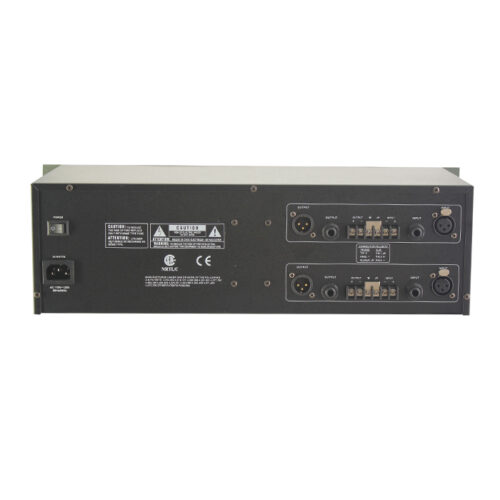
 Techinical parameters Bandwith: 20Hz-20Khz, +0.5db/-1Db Dynamic range: 109db 115db SNR: 90dB 97dB Total harmonic distortion + noise < 0.005% Crosstalk between channels: <- 80dB, 20Hz-20Khz. Interface: 1/4 inch TRS, XLR sockets (two feet for the hot working side, female), and terminal strips. Type: Electric balance is 40k , non equilibrium for the 20k . Maximum input level: > +21 dBu, balanced or unbalanced. 31 Band CMRR: > 40dB, typically> 55dB, 1kHz Export Interface: 1/4 inch TRS, XLR sockets (two feet for the hot working side, female), and terminal strips. Type: Electric balance is 200 , 100 Maximum input level: > +21 dBu, balanced or unbalanced loads or more loads 2k . CMRR: > 18dB, balanced /unbalanced (connected 600 load).
Techinical parameters Bandwith: 20Hz-20Khz, +0.5db/-1Db Dynamic range: 109db 115db SNR: 90dB 97dB Total harmonic distortion + noise < 0.005% Crosstalk between channels: <- 80dB, 20Hz-20Khz. Interface: 1/4 inch TRS, XLR sockets (two feet for the hot working side, female), and terminal strips. Type: Electric balance is 40k , non equilibrium for the 20k . Maximum input level: > +21 dBu, balanced or unbalanced. 31 Band CMRR: > 40dB, typically> 55dB, 1kHz Export Interface: 1/4 inch TRS, XLR sockets (two feet for the hot working side, female), and terminal strips. Type: Electric balance is 200 , 100 Maximum input level: > +21 dBu, balanced or unbalanced loads or more loads 2k . CMRR: > 18dB, balanced /unbalanced (connected 600 load). -
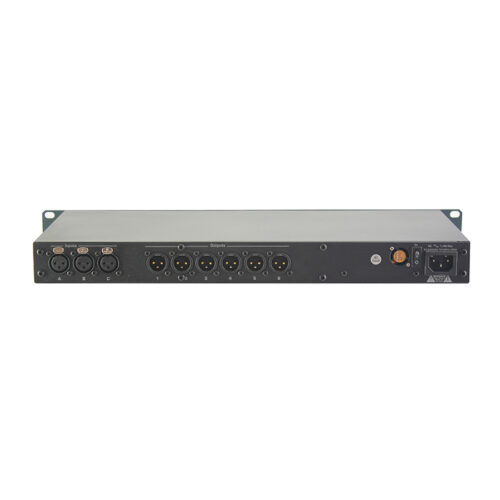
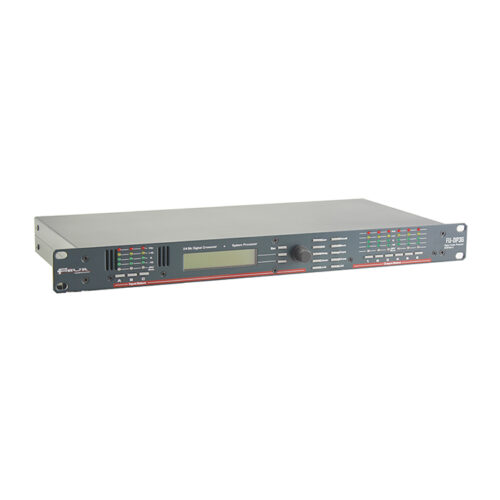 Digital Processor One Rack Space. Three inputs - Six Outputs Extra input allows for AUX fed subs Extremely intuitive user interface Front panel programing and control Crossover, EQ, Delay and limeter functions Outputs Assignable to any input Superior Sonic Quality Identical in performance to the 4.24C XLR audio connections Balanced inputs and outputs Parametric lters and Comp/Limiter to control feedback problems. Linkwitz-Riley Bessel and Butterworth lters. 12, 18, 24 and 48dB/Octave Slopes Parametric EQ: 1/6th to octave range Input and Output Delay Limiter on each Output Individual input and output metering Four levels of security
Digital Processor One Rack Space. Three inputs - Six Outputs Extra input allows for AUX fed subs Extremely intuitive user interface Front panel programing and control Crossover, EQ, Delay and limeter functions Outputs Assignable to any input Superior Sonic Quality Identical in performance to the 4.24C XLR audio connections Balanced inputs and outputs Parametric lters and Comp/Limiter to control feedback problems. Linkwitz-Riley Bessel and Butterworth lters. 12, 18, 24 and 48dB/Octave Slopes Parametric EQ: 1/6th to octave range Input and Output Delay Limiter on each Output Individual input and output metering Four levels of security -
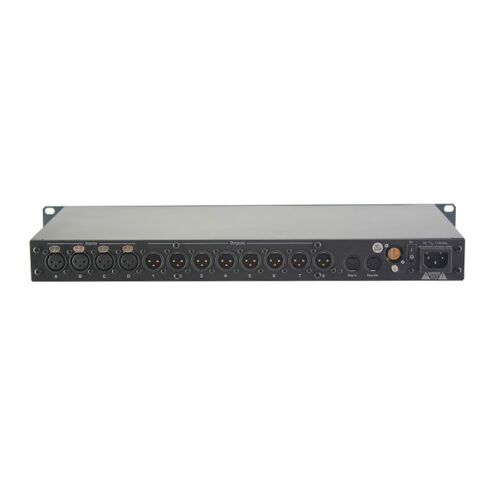
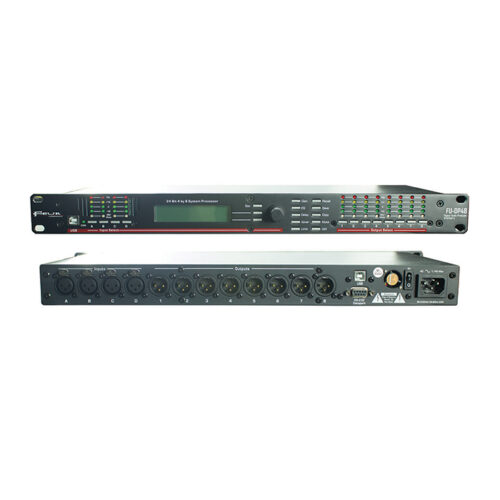 Digital Processor One Rack Space Four inputs -Eight outputs Extremely Intuitive user interface Crossover EQ, Delay and limiter functions Outputs assignable to any input Superior Sonic Quality Front Panel, PC or MIDI Programing and control Third Party control friendly XLR Audio connections Balanced inputs and outputs Parametric lters and Comp/Limiter to control feedback problems. Linkwitz-Riley, Bessel and Butterworth lters 12, 18, 24 and 48dB/Octave Slopes Parametric EQ 1/64th to 4 Octave range Input and Output Delay Limiter in each output Individual input and output metering Fout levels of security Applications Conventional PA systems FCH Monitors AUX fed subs L-C-R con gurations Multi-zoned systems
Digital Processor One Rack Space Four inputs -Eight outputs Extremely Intuitive user interface Crossover EQ, Delay and limiter functions Outputs assignable to any input Superior Sonic Quality Front Panel, PC or MIDI Programing and control Third Party control friendly XLR Audio connections Balanced inputs and outputs Parametric lters and Comp/Limiter to control feedback problems. Linkwitz-Riley, Bessel and Butterworth lters 12, 18, 24 and 48dB/Octave Slopes Parametric EQ 1/64th to 4 Octave range Input and Output Delay Limiter in each output Individual input and output metering Fout levels of security Applications Conventional PA systems FCH Monitors AUX fed subs L-C-R con gurations Multi-zoned systems
